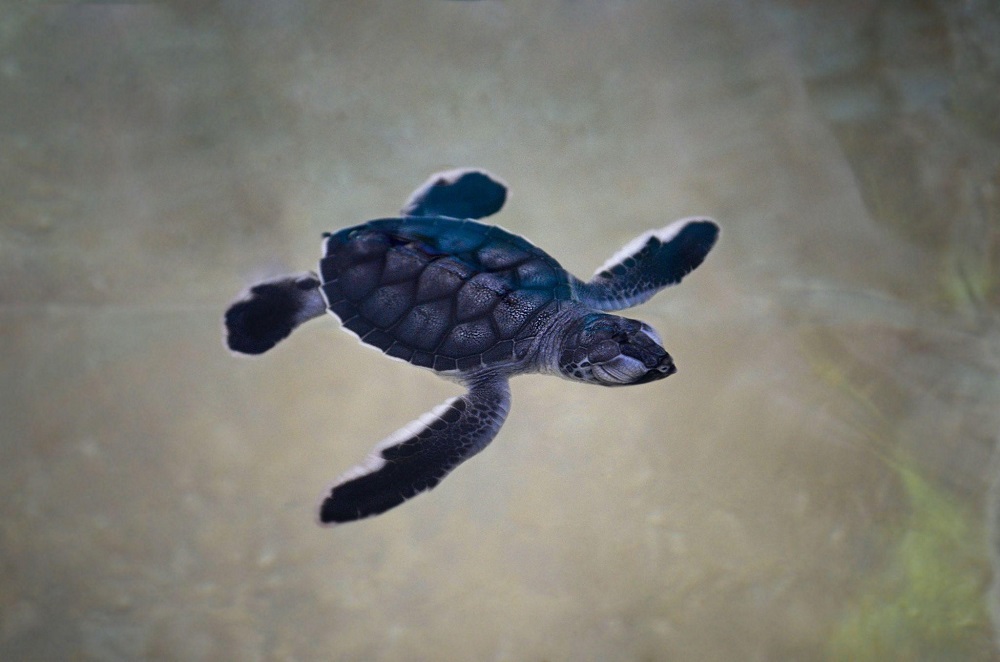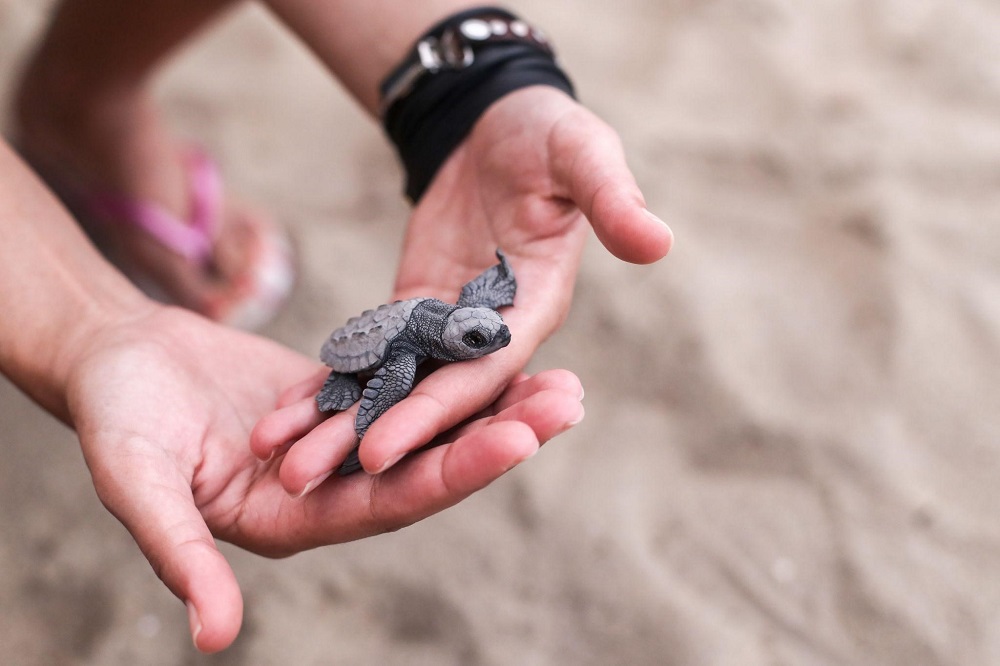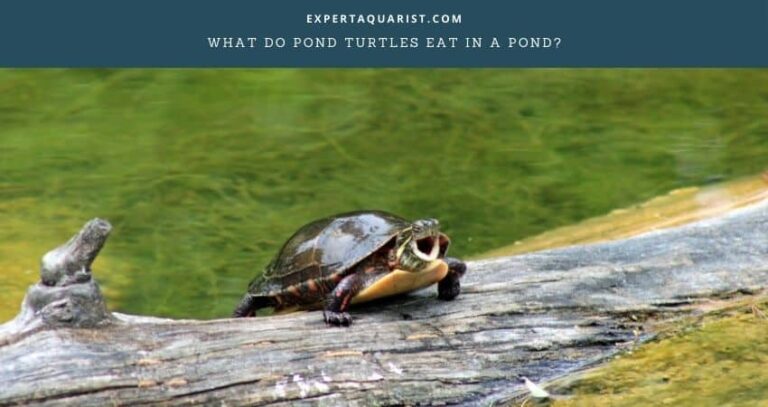Caring for a new pet is always challenging for a new pet owner. However, adding a pet to your family in its babyhood can be quite nerve-racking, especially if you have no prior experience caring for a baby.
While a baby turtle is not a big commitment for a pet owner, you still have to ensure that you provide your pet with the care it needs to stay healthy and happy in its new environment. Let’s take a look at everything you need to know about how to take care of a baby turtle.

What You Need to Know
To be able to take care of your baby turtle properly, you need to make sure you educate yourself about the turtle species it belongs to. First and foremost, you should know there are a few key differences between some turtle species, even if they generally look very similar.
For example, a tortoise differs from a regular turtle because tortoises live on land, unlike turtles that spend a lot of time in the water. Turtles have adapted to specifically live in the water, as indicated by their many physiological characteristics, like their less heavy and more water-dynamic shells that help them swim. In contrast, tortoises have larger, heavier, and more rounded shells that would not be ideal for swimming.
While there are many kinds of turtles, the tips we provide you below are generally suitable for most, if not all, types of turtles. Regardless, it is still essential to know everything you can about the species your pet belongs to, as it will determine the kind of environment and temperature your turtle requires, the type of food it needs to eat, and much more.
Generally, caring for a baby turtle is not too complex. You only have to make sure that you consistently feed them, keep their tank clean, and check on them. You should also not expect a baby turtle to be a pet you can interact with too much. They generally dislike being overly handled due to the size difference between them and humans.
Being affectionate with your turtle might cause stress, negatively impacting its health. Moreover, some turtles are nocturnal, so you need to ensure not to bother them too much during the day. Therefore, if you want to be a good pet parent to your baby turtle, you must ensure that you disturb them only for feeding, tank maintenance, healthcare, etc.
What Kind of Habitat Does Your Baby Turtle Need?
Once again, the type of habitat you choose depends on the species of your baby turtle. Most baby turtle parents choose some kind of aquarium or terrarium. The size of the tank is a crucial thing to consider.
Turtles grow bigger with time, and because of their longevity, you need to ensure that the tank will continue to be big enough for your turtle when it is fully grown. Therefore, you should always ensure the tank you want to purchase meets the minimum size requirements before you buy it.
Moreover, even when your turtle reaches its full-grown size, the tank should still provide enough space for your turtle to move around, and, in the case of an aquarium, it should provide ample space for your turtle to swim. Of course, the number of pet turtles will also determine your tank’s size.
You should also account for space for rocks, plants, and a basking area, so your turtle can have a place to get out of the water when it needs to. This above-the-water land area needs to be easily accessible from the water and be long and large enough for your pet turtle.
The water level must also be according to the baby turtle’s size so it can swim properly. You should avoid having the water being too deep for baby turtles as they are just beginning to learn how to swim. As your baby turtle grows and becomes a more experienced swimmer, you can always readjust the water level and make it deeper.
Another thing to pay special attention to is the temperature. Turtles cannot regulate their body temperature, so if they are exposed to temperatures different from their natural habitat, they can develop serious health issues.
You must be careful with the water temperature if you have an aquarium. To do this, you need a water heater to keep the temperature at the appropriate levels and a thermometer to regularly check it. You should note that some turtles require different water temperature levels, so you always have to check what type of temperature is appropriate for the baby turtle species you have.
Besides the water, you will also need to ensure that the temperature above the water is also at the appropriate levels for young turtles. You will need a UVB light as it helps turtles produce vitamin D, which is vital for their bones and the development of their shells. You will also need another light in the basking area to keep the turtle warm above the water.
Make sure to use a second thermometer to check the air temperature and a timer that can automatically turn on and off the lights as needed. You should set the timer to keep the lights on long enough to mimic the natural cycle of daylight.

Proper Cleaning Practices and Baby Turtle Care
Usually, turtles do not require bathing, but tortoises might need to be gently wiped down if they get something on them. However, the water quality in the turtle tank will determine your pet’s health, so changing the water and cleaning the tank are the most important practices you need to establish very early on.
Turtles, especially baby turtles, need a lot of maintenance, so you will need to change the tank’s water daily to prevent diseases in your pet. However, using a water filter in the turtle tank allows you to change the water less often.
With a filter, you will have to keep checking on the condition of the water every two to three days, but you will be required to replace it after ten days completely. There are various filters available on the market, but one thing you need to be looking for is the volume of the filter.
As mentioned earlier, baby turtles can be a bit messy, so a regular fish tank filter might not be able to keep your water tank clean enough. Therefore, looking for a water filter explicitly made for a turtle tank would be a good idea.
Proper Diet for Your Baby Turtle
The diet for a young turtle should include a variety of different food. Different types of turtles have different dietary needs, so educate yourself first on what is suitable for your baby turtle. Insects (crickets and worms), some types of fish, and some greens are generally appropriate for most turtles.
Canned turtle food or turtle pellets are suitable as they tend to include most of the nutrients your baby turtle needs. However, if you own a baby tortoise, you need to know that it cannot eat meat, so a mix of greens would be more appropriate.
Remember that in the early stages, pet turtles might not be inclined to eat everything you provide, but it is still important to always have various foods to try different things. Moreover, as your turtle grows, you can always expand its “menu options” and see what more you can fit into its diet.
Finally, you will need to feed your baby turtle every day. You will have to provide the food in the water so the turtle can swallow it and allow about half an hour to finish eating. After the young turtles finish eating, you can dispose of any leftovers to maintain the water quality.
You can also feed the baby turtle in a separate tank to avoid dirtying the water. However, when transferring the turtle to the other tank, you will have to use water from the main tank so the turtle can maintain its body temperature.
If you notice that your turtle does not eat its food for a few days in a row, then it might be a sign of illness. First, check the tank’s temperature to ensure that this is not the reason behind your turtle’s condition. Then, call your veterinarian and follow their advice to care for your pet.

In Summary: Baby Turtle Care Sheet
Here is a quick summary of what needs to be done to properly care for your baby turtle. Remember, young turtles are relatively easy to care for and thrive in their new home under the right circumstances.
What You Need:
- Turtle housing
- Heating lamp
- Filtration system
- Substrate
- Basking rock
- Thermometers
- Cleaning supplies
What You Need to Do:
- Find a space for your baby turtle: determine the type of habitat needed for your pet turtle and if they need access to land, water, or both. Turtles also love space, so make sure they have a designated space in the home large enough to accommodate them.
- Set up the habitat: Find the right turtle tank, fill it with 50% land for a terrestrial turtle or have a large basking area for an aquatic turtle once it is fully grown. For hatchlings, the depth of the water has to be greater than the width of the turtle’s shell. It also should be easy for the young turtle to get in and out of the water. You can then decorate the turtle tank, turn up the heat, and keep the tank clean.
- Feed and care for your turtle: Feed your young turtles daily and interact with them. In the wild, turtles usually have a diet of worms, snails, and plants. You can get turtle food from the pet store that will allow them to maintain a balanced diet.






